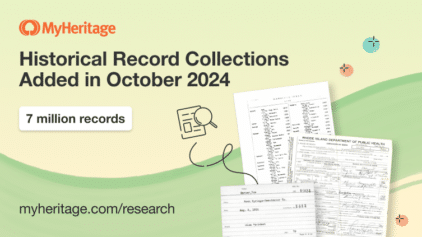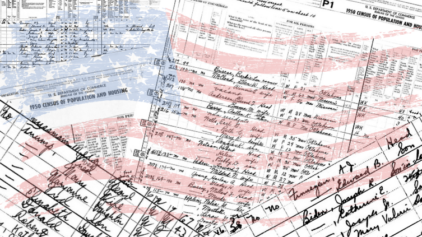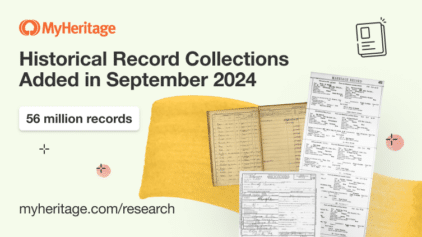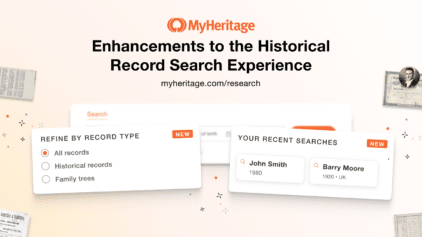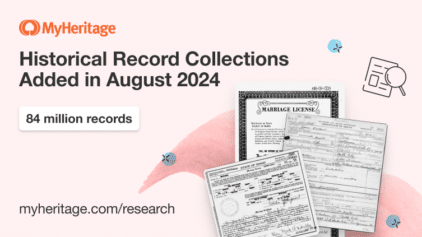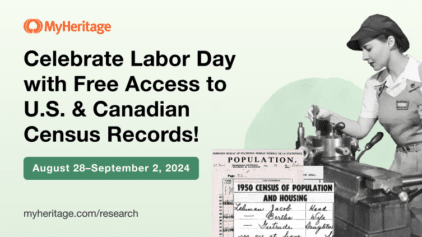Farm Surnames from the Netherlands, Germany and Scandinavia
- By Legacy Tree Genealogists ·
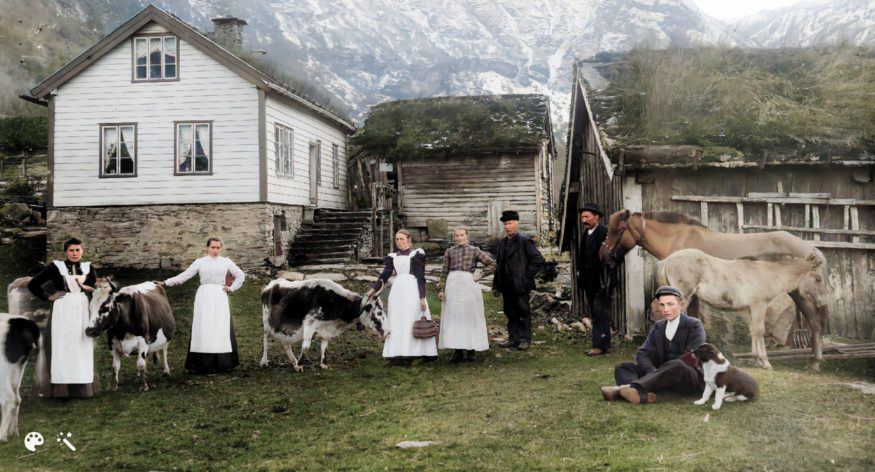

Farm names are a unique type of surname that can prove a special challenge for genealogists. These types of names were used to identify a particular family with land ownership or residence, and the tricky thing about them is that they were not always transferred in the traditional way. Exactly how they were used and what they represented varied from region to region. Did your family own a farm in the Netherlands, Germany or Scandinavia? Start unlocking your family’s story by researching your surname from billions of online historical records.
In this post, we’ll explore the use of farm names from the Netherlands, Germany, and Scandinavia, and learn how to go about researching this type of surname.
Farm Names in the Netherlands
In the Netherlands — specifically, the Drenthe, Overijssel and Gelderland provinces — individuals and families took the name of the farm they lived on, and if they moved, they changed their surname to the new farm name.
Researching farm names in the Netherlands can be challenging. Many people chose silly names as their fixed surnames after the decree in 1811 from Napoleon required a fixed surname. Basically, to know if it was a farm name, you have to trace the family back to before 1811. If the name was in use before that time (again, added as a third name, or sometimes used in the place of the patronymic) then it was most likely a farm name.
Since the Netherlands also used patronymics before the 1811 law mandating fixed surnames, it is essential to prove each generational link. This sometimes requires court records, tax registers, and other local resources to find evidence connecting your family to the farm they lived on.
Ready to explore the lives of your Dutch ancestors? Get started with MyHeritage’s collection of vital records from the Netherlands.
And today as part of our June Free Records Campaign, you can get free access to the Netherlands, Civil Births, 1811-1915. Tomorrow the Netherlands, Civil Marriages, 1811-1940 will be accessible for free.
German Farm Names
In Germany — particularly the regions of Westfalen, Hannover, Lippe-Detmold, Rheinland, Oldenburg, and Schlesie — the use of a farm name denoted the status of being a land owner, so anyone who owned enough land to be called a “large farm” or an “estate farm” could be found using a farm name. A farm of this size and status might be owned by someone who was a butcher, a blacksmith, a weaver, or of a similar profession that would allow the farm to be generally self-sufficient. The market and church would typically be found in the nearest village.
In addition to the farm name, a surname was often associated with the farm. During the transition into ownership, they would use the surname associated with the farm and/or the farm name, add the term gennant or something similar, and then their original surname at the end.
In Germany, only the owner of this farm would use a farm name and pass it on to their children. Consequently, land ownership was more important than your identity at birth. When a man inherited a farm he often began using the farm name as a replacement for his birth name, or a combination of the two names with the farm name appearing first followed by “alias,” “vel,” “modo,” “gennant,” or “dit” and the original surname.
Farm names were so important that if a woman inherited a farm, her husband took her surname and the farm name rather than following the tradition of a woman taking her husband’s surname. For this reason, it is essential to find the ancestor’s marriage record where the farm name first appears to know the ancestor’s original surname and whose family the farm was inherited from to trace these lines back correctly.
German farm names can include, but are not limited to, many names beginning or ending in -kamp or -hof. But there’s a catch! Not all Hof names (e.g. Hoffman) were associated with farms–some were occupational surnames. Examples of some German farm names that became surnames are:
- Kampmeinert
- Ryskamp
- Heitkamp
- Hogenkamp
- Niekamp
- Pulskamp
- Haberkamp
- Moehlenkamp
- Neuhof
- Brinkerhof
- Berkhoff
- Eickhoff
- Grasshoff
- Hasselhoff
- Kirchhoff
These are some of the most easily identifiable farm names, but there are many others. Farm names may sometimes appear to be normal names, but upon researching the family it may come to light that the name is associated with a farm.
Are there farm names in your German family history? Find out by searching the MyHeritage vital record collection for Germany.
Scandinavian Farm Names
In Norway, Sweden, and Finland farm names were also important, but they didn’t necessarily mean that the person who took the name owned the farm — they might have only lived there. If a person or family moved from one farm to another, they ceased using the first farm name and took on the new farm name. Norwegians still kept their patronymic (surname derived from a father’s name) and merely added the farm name as a second unique family identifier. If a family moved from a farm to the city, as many did during the Industrial Revolution of the mid- to late-1800s, they typically continued using their most recently acquired farm name.
It was also common, though not universal, for Norwegian emigrants to use that farm name as their fixed surname when transitioning to a society that doesn’t use patronymics. For example, a man named Lars Olsen Hagelund (Lars, son of Ole, from the farm Hagelund) might immigrate to America and begin calling himself Lars Hagelund. Or, he might drop the farm name and take his patronymic as his new fixed surname — going by Lars Olsen. Just to keep things interesting, it was still possible for this immigrant to appear in United States records as either Lars Olsen or Lars Hagelund.
In Sweden and Norway, anything appended name used in addition to the given name and patronymic was a farm name. When a Scandianavian person began using a fixed surname, it was typically that person’s patronymic, or the last farm name the family was associated with. Most Scandinavian surnames — unless they are patronymic — are farm names. Here are some common farm names listed in one parish in Norway:
- Algarheim
- Allergot
- Aur
- Austad
- Åstad
- Barnkjenn
- Berg
- Bjønningstad
- Bjørke
- Bjørtomt
- Bratval
- Bråten
- Brudalen
- Dal
- Døli
- Døliengen
- Ellingsrud
- Elstad
- Elstaddalen
- Elstadmoen
- Fjellberg
- Fløgstad
- Fløtten
- Furulund
- Furuset
- Garder
- Gislevoll
- Gjestad
- Grinden
- Grøndalen
- Hallingstad
- Hannestad
- Haug i Hovin
- Hauerseter
- Havnemoen
- Helgebostad
- Hög
- Hovin
- Hveim
- Inngjerdingen
- Jaeren
- Julset
- Jødal
- Kjos,
- Klokkeset
- Kolby
- Kopperud
- Korslund
- Korsmo
- Kråfoss
- Kringlemyren
- Kværndalen
- Langeland
- Lauten i Hovin
- Låke
- Li
- Lien
- Ljøgot
- Majorsæter
- Melby
- Melby i Mogreina
- Mjælaberg
- Moen
- Mølledalen
- Møllerstad
- Nordby i Hovin
- Nordby i Kisa
- Nordli
- Nordmyren
- Nygård
- Onsrud
- Risebru
- Rotnebu
- Rud i Hovin
- Rulnes
- Røgler
- Sand
- Sesvoll
- Skryta
- Stendalen
- Stensby
- Stokstad
- Støvner
- Sundby nedre
- Sundby øvre
- Syverstad
- Sætre
- Tangen
- Taugland
- Tranbotn
- Trandum
- Trøgstad
- Vangen
- Vekato
- Vestengen
- Vilberg
Do you recognize any of the surnames on this list? You can research your Norwegian and Swedish ancestors in MyHeritage’s Norwegian and Swedish vital records.
Interpreting and researching farm surnames can be challenging, but armed with an understanding of their nuances and thanks to the availability of digitized records, you’ll be able to scale what could otherwise easily become a brick wall in your genealogy research. So don’t delay—make hay while the sun shines, and get to work on discovering your family history!
The experts at Legacy Tree Genealogists have the knowledge and experience you need to help navigate the various nuances you may encounter as you explore your heritage. Our network of researchers extends all over the world, meaning we can access records necessary to extend your genealogy as far as possible. Contact us today for a free quote!

